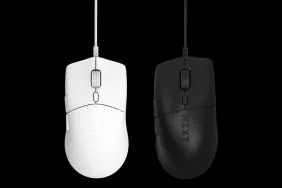A lean game in a fat game’s body.
Like everyone’s favorite supersized Japanese lizard, the bikes of Rainbow Studios’ MX series have risen again and again many times over the years to face off against a litany of formidable vehicular foes. What began as a simple motocross racing game culminated in the over-the-top battle royal of MX vs. ATV: Unleashed, where we saw biplanes and golf carts go toe-to-toe (wheel-to-wing?) with the eponymous ATVs and dirt bikes.
[image1]Rainbow Studios’ latest title, MX vs. ATV: Reflex, continues the trend established by its most recent predecessor, MX vs. ATV: Untamed, and backs off from the kitchen-sink mishmash of prior games and nixes any vehicle that you wouldn’t ordinarily see tearing up your local dirt-filled arena this Sunday, Sunday, SUNDAY!!!
Reflex has put away the crazy sauce—which some of its predecessors have been hitting pretty hard—and plays it safe wherever possible. Unfortunately, going sober has had the unwelcome side effect of sending the series spiraling into a deep identity crisis. Reflex has none of the easy accessibility and joyful chaos of a full-blown arcade racer, and it has none of the attention to detail you would hope for in a racing sim. Even with its pared-down vehicle roster, the physics system and steering mechanics affect different vehicles with varying degrees of success, and the odd assemblage of competition types makes MX vs. ATV: Reflex feel like two or three different games jumbled together into an uneven whole.
To its credit, Reflex is the closest thing that motocross fans have to an accurate recreation of the sport, and the traditional motocross events are still the series’ strongest features. The course designs for these events strike a perfect balance between verticality and terrain variety, which means that learning the ins and outs of the different tracks forces you to find the proper speed for the jumps as much as it means finding a good line.
No other off-road racer expects you to measure your hang-time so precisely, and none challenges you so heavily with its combination of humps, bumps, ramps, berms, gradients, pits, ditches, and ponds. Factor in passable track deformation technology, and you’ve got yourself some excellent tracks to tear up.
[image2]Even though the dirt is piled in all the right places, the new “Rider Reflex” control mechanic makes it difficult just to stay on track and on your bike. Now in addition to standard steering, racers must also use the right stick to control the degree and direction of lean on bikes and ATVs. On paper, this is an excellent idea that should let you fine-tune your turns, load your jumps more precisely, and help you angle your landings; however, in practice, it’s incredibly touchy.
Pre-loading your jumps is now a frustrating mess. Because the reflex controls are so sensitive, the slightest movement to one side or the other while you shift your weight back sends you flying into the bleachers. The added lean does help you to cut into a turn, but that’s nothing that well-designed analog steering couldn’t already handle with just the left stick.
Tricks have been greatly simplified. Just hold down the trick-modifier button and move the right stick in any combination of three directions to do a trick. It’s quick, easy, and… dull as rocks. With no great technical differentiation between the tricks, they all blend together. Worse, they serve no purpose other than in the very few Freestyle competitions.
The Freestyle events are judged on five different criteria—like flow and degree of difficulty—but the scoring system is impossibly opaque, so it’s never very clear why some runs will score better than others. The trick system isn’t very versatile or adaptable and is severely limited by the over-simplified stick movements.
[image3]The worst event types, however, are found in the Free Run competitions. These present you with a small patch of open land—like forest, desert, or snowy mountains—and leave you to hunt down flags marking four different event types. These levels are small and unimaginative. Unlike the bounded courses, the open areas have few good runs, and they too often bring out the spastic side of the game’s physics as you head up steep inclines and rocky terrain that send your bike spinning off at impossible angles.
The game also throws in mandatory buggy and sport truck competitions at the tail end of championships. It’s a strange way to force you to use the other vehicles, and it gives the larger classes a tacked-on flavor. You also won’t find a very large list of vehicles to purchase, and the tuning options are similarly thin. Online racing works without a hitch, but with few customization options and no quick race option, the multiplayer modes have no legs to stand on.
MX vs. ATV: Reflex would benefit greatly from a diet of raw motocross action. Without the added weight of the Rider Reflex controls, the other vehicles, or its half-baked race types, this could be one lean, dirt-shredding machine. As it is, it’s a misshapen lump of flabby features and excess ideas. Beneath that fleshy exterior lies the gem of a good game, but it’s tough to see with all that heavy baggage in the way.
-
Excellent track design
-
Solid fun on a bike or ATV
-
Forgettable in a buggy or truck
-
Rider Reflex needs work
-
Throwaway competition types











